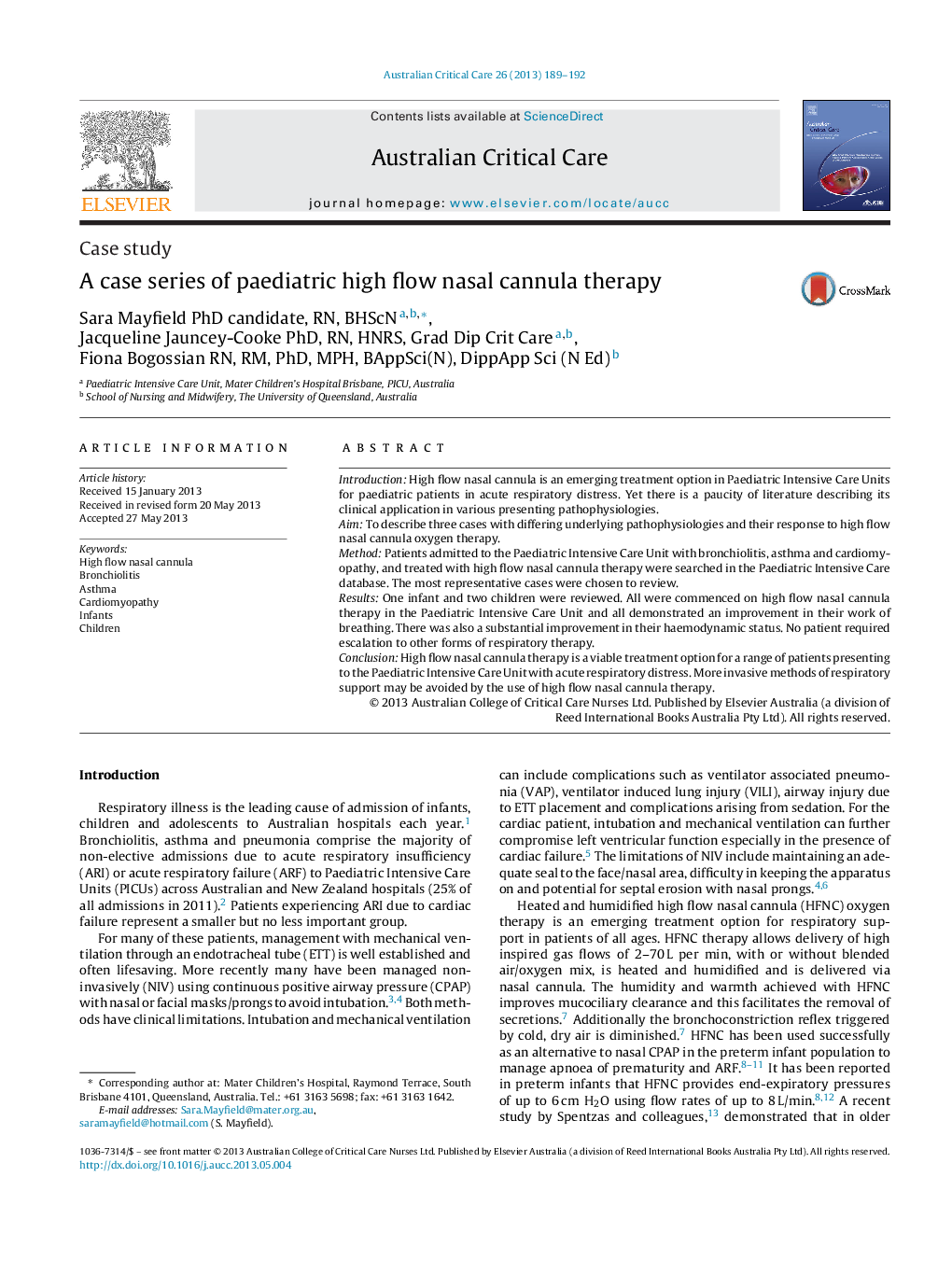| Article ID | Journal | Published Year | Pages | File Type |
|---|---|---|---|---|
| 2607444 | Australian Critical Care | 2013 | 4 Pages |
IntroductionHigh flow nasal cannula is an emerging treatment option in Paediatric Intensive Care Units for paediatric patients in acute respiratory distress. Yet there is a paucity of literature describing its clinical application in various presenting pathophysiologies.AimTo describe three cases with differing underlying pathophysiologies and their response to high flow nasal cannula oxygen therapy.MethodPatients admitted to the Paediatric Intensive Care Unit with bronchiolitis, asthma and cardiomyopathy, and treated with high flow nasal cannula therapy were searched in the Paediatric Intensive Care database. The most representative cases were chosen to review.ResultsOne infant and two children were reviewed. All were commenced on high flow nasal cannula therapy in the Paediatric Intensive Care Unit and all demonstrated an improvement in their work of breathing. There was also a substantial improvement in their haemodynamic status. No patient required escalation to other forms of respiratory therapy.ConclusionHigh flow nasal cannula therapy is a viable treatment option for a range of patients presenting to the Paediatric Intensive Care Unit with acute respiratory distress. More invasive methods of respiratory support may be avoided by the use of high flow nasal cannula therapy.
